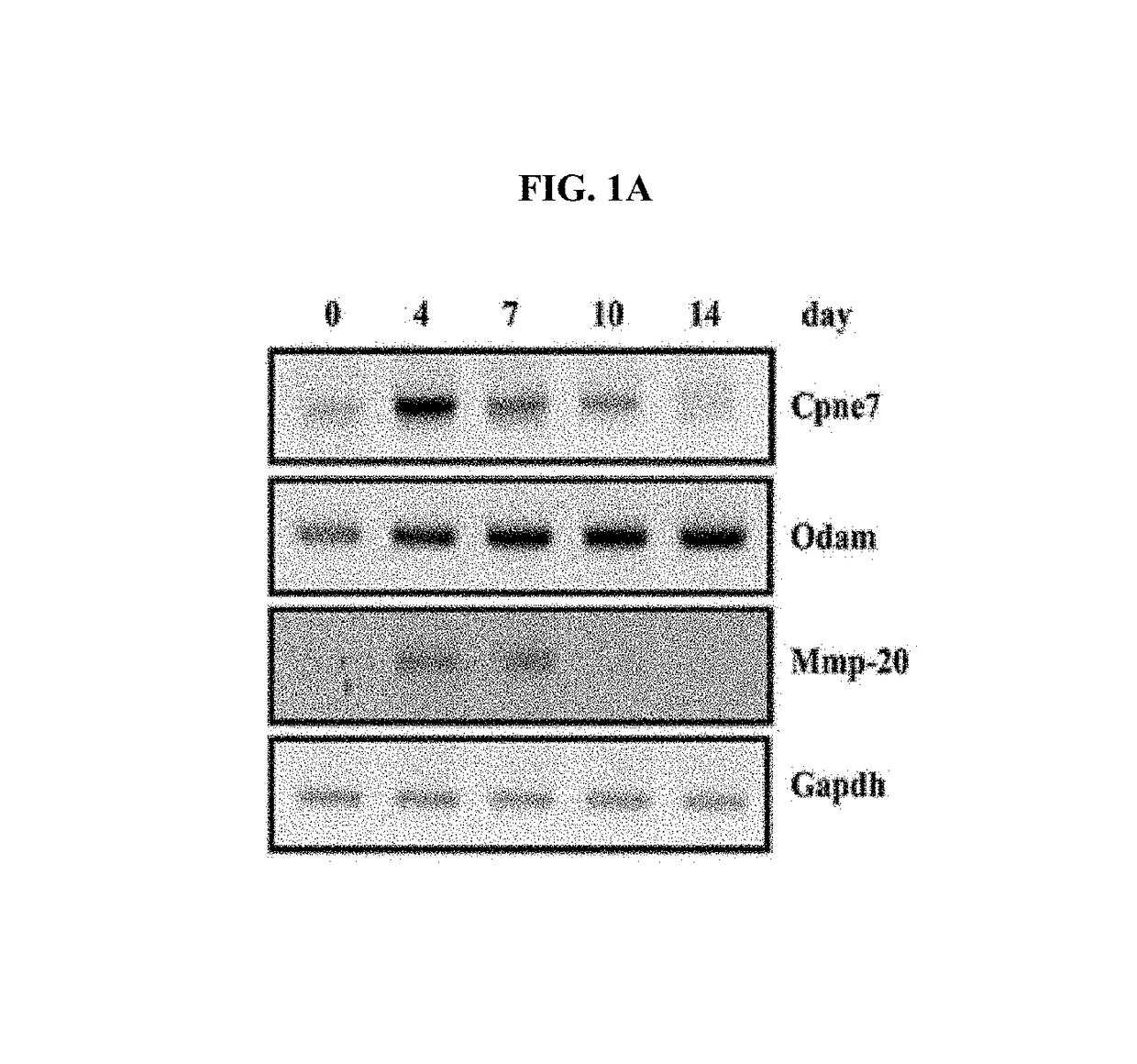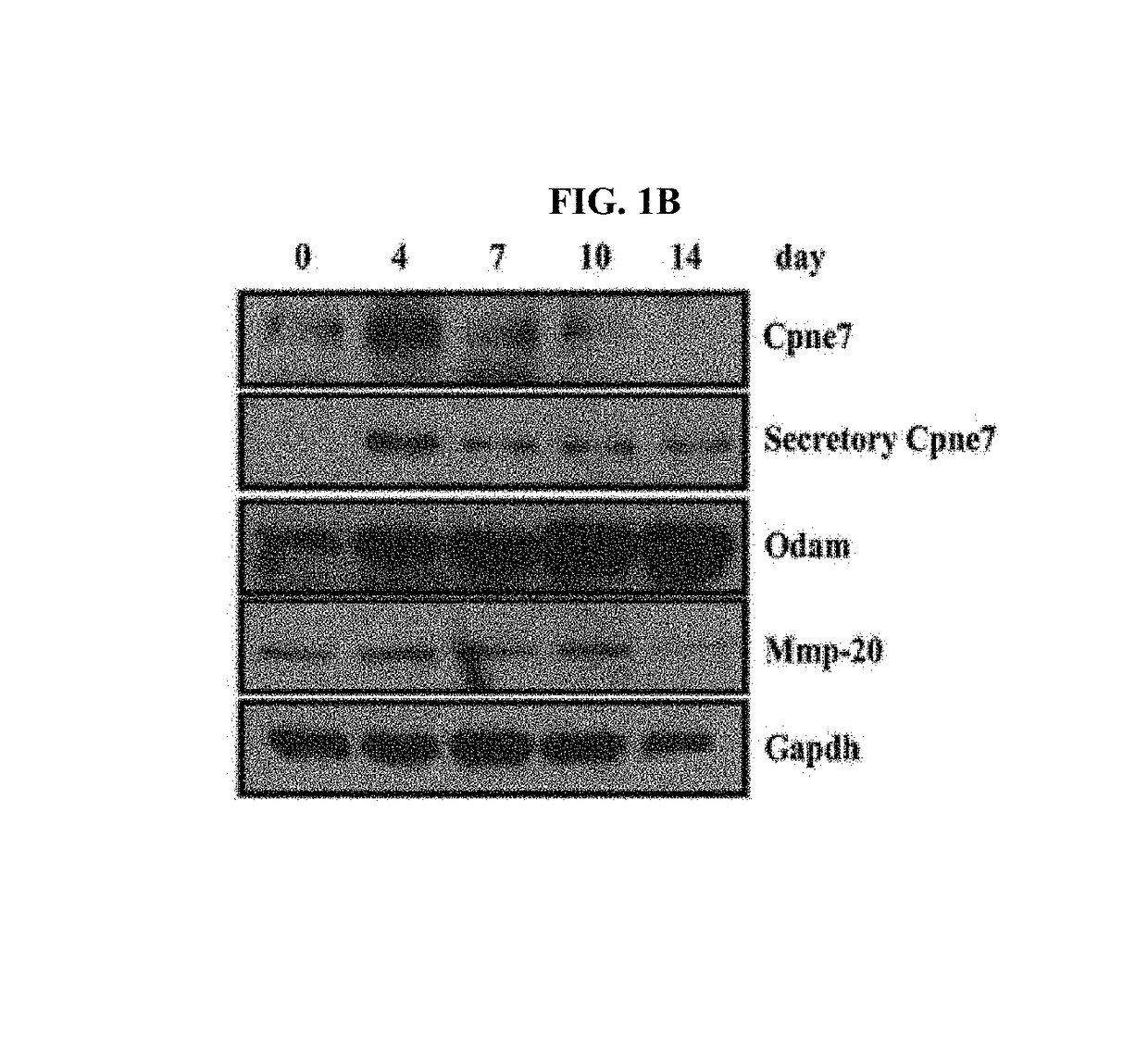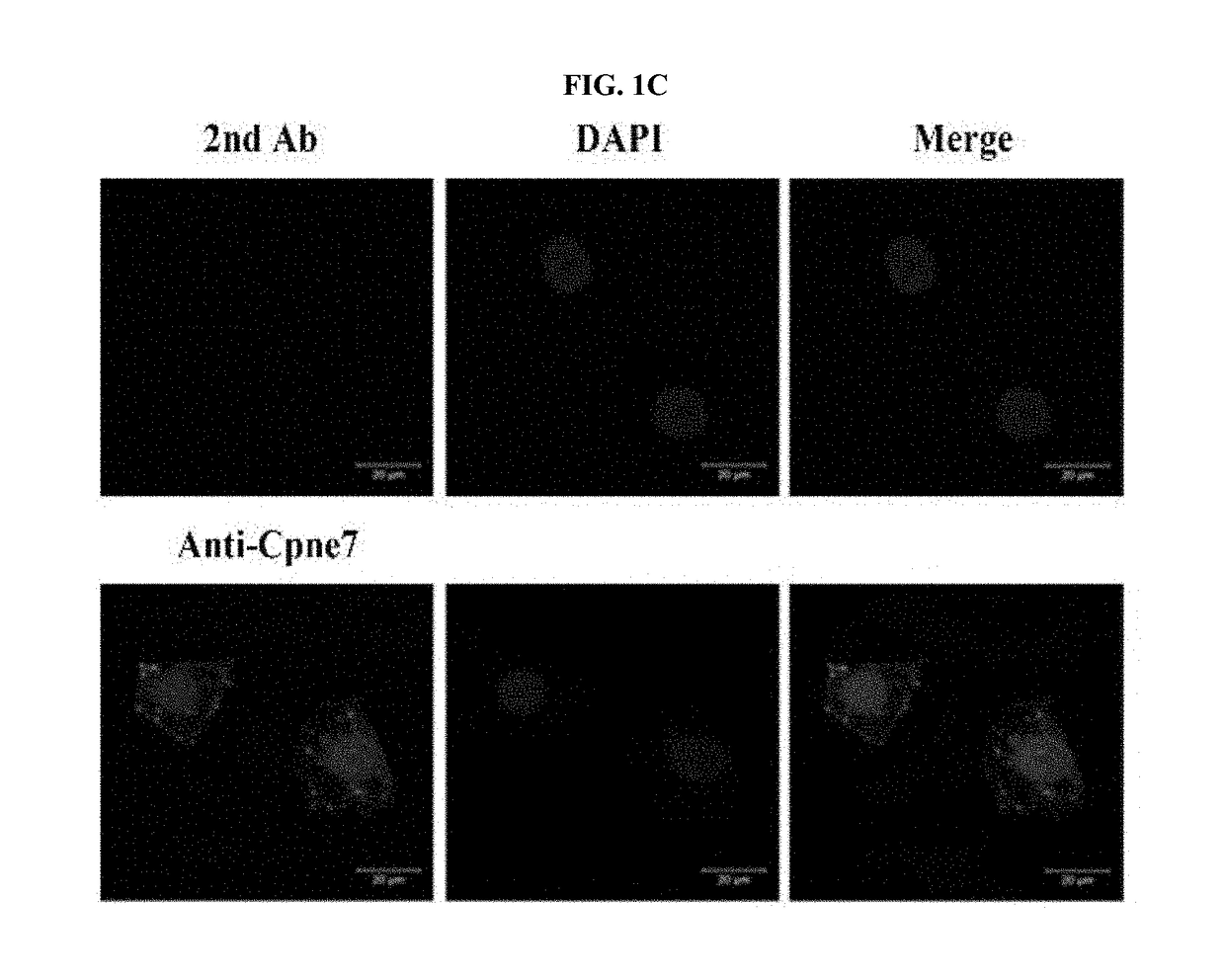Use of CPNE7 for differentiating non-dental mesenchymal stem cells into odontoblasts, regenerating dental pulp and treating dentin hypersensitivity
a technology of non-dental mesenchymal stem cells and pharmaceutical compositions, applied in the direction of skeletal/connective tissue cells, peptide sources, impression caps, etc., can solve the problems of low ability to regenerate, physiologically acceptable methods, and hampered use of mta
- Summary
- Abstract
- Description
- Claims
- Application Information
AI Technical Summary
Benefits of technology
Problems solved by technology
Method used
Image
Examples
examples
Materials and Methods
1. Cell Culture and Co-Culture System
[0095]MDPC-23 cells were provided by Dr. J. E. Nor (University of Michigan, Ann Arbor, Mich.). ALCs were provided by Dr. T. Sugiyama (Akita University School of Medicine, Akita, Japan). C3H10T1 / 2 and HEK293 human embryonic kidney cells were obtained from American Type Culture Collection (ATCC, Manassas, Va.). Human BMSCs (PT-2501) were purchased from Lonza (Walkersville, Md.). MDPC-23, C3H10T1 / 2, hBMSCs, and HEK293 cells were cultured in Dulbecco's modified Eagle medium (DMEM; Life Technologies, Grand Island, N.Y.), and ALCs were cultured in minimum essential medium (MEM; Life Technologies) supplemented with 10% heat-inactivated fetal bovine serum (FBS; Life Technologies) and antibiotic-antimycotic (Invitrogen, Carlsbad, Calif.) at 37° C. in an atmosphere of 5% CO2. To induce cell differentiation and mineralized nodule formation, confluent cells were treated with induction medium (DMEM containing 50 μg / ml ascorbic acid and 10...
PUM
| Property | Measurement | Unit |
|---|---|---|
| pH | aaaaa | aaaaa |
| pH | aaaaa | aaaaa |
| pH | aaaaa | aaaaa |
Abstract
Description
Claims
Application Information
 Login to View More
Login to View More - R&D
- Intellectual Property
- Life Sciences
- Materials
- Tech Scout
- Unparalleled Data Quality
- Higher Quality Content
- 60% Fewer Hallucinations
Browse by: Latest US Patents, China's latest patents, Technical Efficacy Thesaurus, Application Domain, Technology Topic, Popular Technical Reports.
© 2025 PatSnap. All rights reserved.Legal|Privacy policy|Modern Slavery Act Transparency Statement|Sitemap|About US| Contact US: help@patsnap.com



